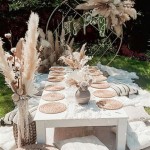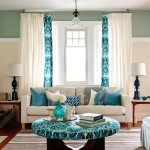How Can I Determine My Decorating Style?
Defining one's decorating style can feel like a daunting task. With countless aesthetics vying for attention, pinpointing personal preferences amidst the noise requires introspection and exploration. This article offers a structured approach to navigating the world of interior design and discovering a style that resonates with individual tastes and lifestyles.
1. Analyze Existing Preferences
The first step in identifying a decorating style involves examining current tastes. This assessment can encompass various aspects of one's life, from clothing choices and preferred color palettes to admired architectural styles and favored travel destinations. Consider recurring patterns in these preferences. Does a penchant for clean lines and neutral colors in clothing translate to an appreciation for minimalist interiors? Does a love for historic architecture suggest a leaning towards traditional or classical design?
Reviewing existing possessions offers further insights. Analyze furniture, artwork, and decorative objects already owned. What are the common threads that unite these pieces? Are they characterized by ornate details, rustic textures, or sleek, modern forms? Understanding what already appeals provides a foundation for building a cohesive decorating style.
Digital platforms like Pinterest and Instagram can also be valuable tools. Creating mood boards by saving inspiring images helps visualize preferred aesthetics and identify recurring themes. Note the elements that consistently draw the eye – specific color combinations, furniture styles, or overall room atmospheres – to further refine the understanding of one's decorating inclinations.
2. Explore Different Decorating Styles
Once a preliminary understanding of existing preferences is established, exploring various decorating styles expands the horizons and clarifies which resonate most strongly. Researching different aesthetics – from traditional and contemporary to bohemian and industrial – exposes individuals to a range of possibilities and helps solidify personal preferences.
Traditional style, for instance, emphasizes classic details, ornate furnishings, and rich color palettes, often drawing inspiration from historical European design. Contemporary style, in contrast, embraces clean lines, simple forms, and a focus on functionality. Understanding the defining characteristics of each style allows for informed decision-making and a clearer articulation of personal taste.
Bohemian style celebrates eclecticism, vibrant colors, and global influences, incorporating textiles, patterns, and textures from various cultures. Industrial style, on the other hand, draws inspiration from factories and warehouses, featuring exposed brick, metal accents, and utilitarian furniture. Exploring the nuances of these diverse styles allows individuals to discern which elements resonate and inform their own decorating choices.
3. Consider Lifestyle and Functionality
While aesthetics play a crucial role in determining decorating style, practicality and functionality are equally important. A chosen style should not only be visually appealing but also align with one's lifestyle and the practical needs of the space. A family with young children, for example, might prioritize durability and easy maintenance over delicate fabrics and intricate details.
The size and layout of the space also influence the suitability of different decorating styles. A minimalist approach might be ideal for a small apartment, maximizing space and light. A larger home, however, could accommodate a more elaborate style, such as traditional or eclectic, without feeling cluttered.
Consider how the space will be used. A home office requires a different aesthetic and functionality than a living room or bedroom. The decorating style should support the intended purpose of the room and create an environment conducive to the activities that will take place within it. Ultimately, the chosen style should enhance both the visual appeal and the functionality of the space, creating a harmonious and comfortable living environment.
4. Experiment and Refine
Discovering one's decorating style is not a static process; it involves experimentation and refinement. Start by incorporating elements of a preferred style into a small area, such as a single room or even a corner. Observe how the changes feel and make adjustments as needed. This iterative approach allows for flexibility and prevents overwhelming the space with a style that might not fully align with personal preferences in practice.
Don't be afraid to mix and match elements from different styles. Eclecticism, blending aspects of various aesthetics, allows for a personalized and unique approach to decorating. Incorporating elements that genuinely resonate, regardless of strict adherence to a single style, creates a space that reflects individual personality and taste.
Decorating is an ongoing journey of self-discovery. As tastes evolve and lifestyles change, so too might decorating preferences. Embrace the process of experimentation and refinement, continually evaluating and adjusting choices to create a space that reflects personal style and enhances the overall living experience.

Help For Finding Your Decorating Style A New Gallery Of Posts The Inspired Room

5 Easy Steps To Find Your Decorating Style Quickly

How To Figure Out What S My Design Style Worthing Court

Interior Design Styles 101 The Ultimate Guide To Defining Decorating

What S My Home Decorating Style Quiz And Design Tips Mymove

Interior Design Styles 101 The Ultimate Guide To Defining Decorating

How To Decorate So You Feel At Home In My Own Style

Tips For Eclectic Decorating Home Decor

Interior Design Styles 101 The Ultimate Guide To Defining Decorating

Ad S Ultimate Guide To Interior Decorating Architectural Digest
Related Posts







